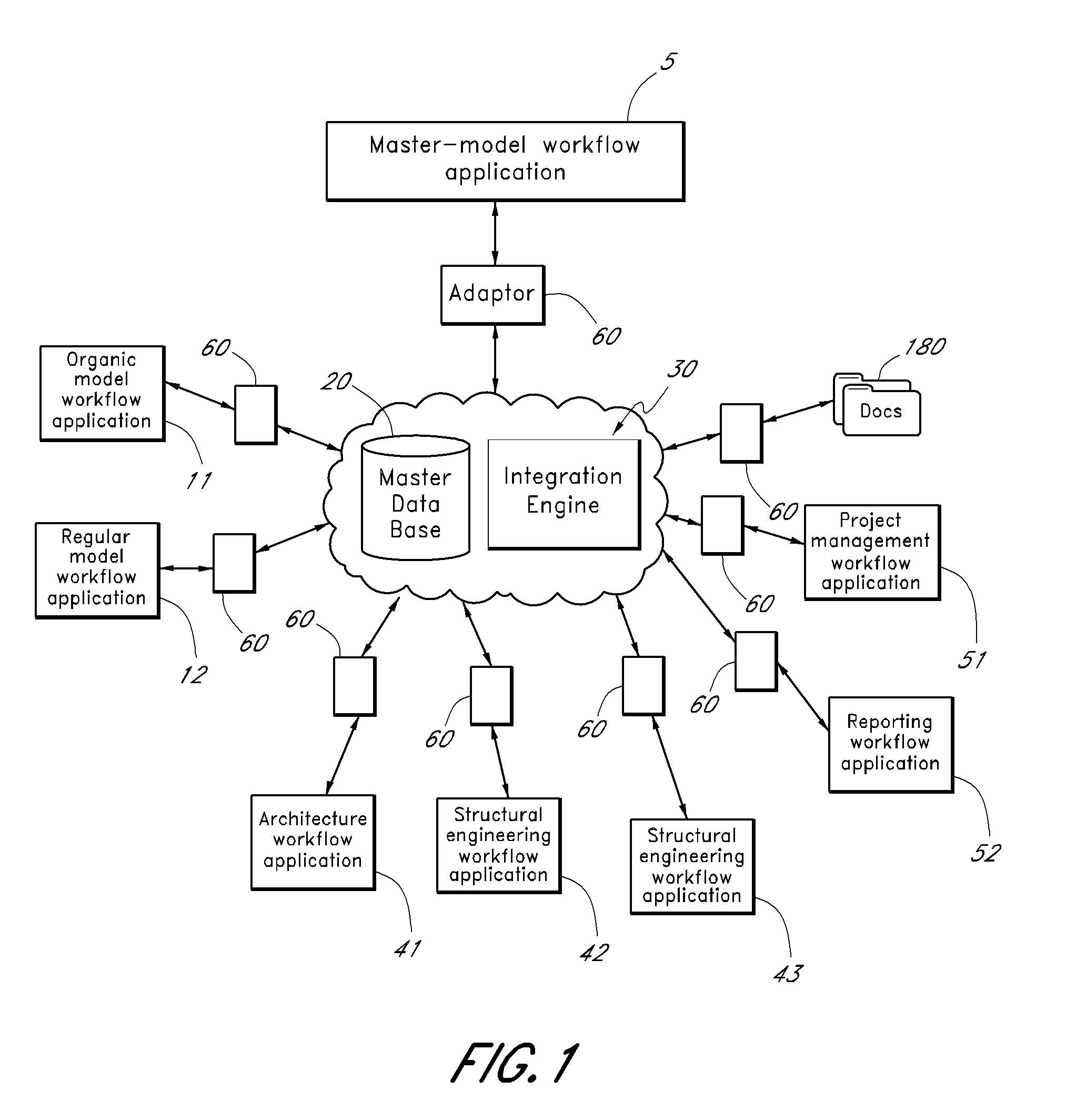An object may be susceptible to different views.
Although designers can hand-create a model that is both organic and regular, such a model can be difficult to create and manipulate using computer-aided design tools.
As a result, it is often difficult to integrate models of the organic aspects of the product with models of the regular aspects of the product.
It is particularly difficult to do so in a way that allows the
client to experience the master-model and see that their requirements are understood and addressed.
It is similarly difficult to do so in a way that lets other members of the
design team fully explore a model, especially one containing both regular and organic aspects.
Given that designers and design teams often use multiple object manipulation tools, one problem they face is ensuring that the changes propagate across all of them.
For example, it is not desirable for the dimensions of an object to be changed and for that change not to be apparent to the designer of the internal structure of that object.
Another problem is in ensuring consistency: it is not desirable for a designer manipulating an organic view to give an object dimensions that can not be implemented structurally or that would consume a prohibitive amount of resources when implemented.
Unfortunately, if the structural limitations are only apparent when using a structural view tool then a user of an organic view tool is at
increased risk of being unaware of them, and a user wishing to assess the
impact of a change on the overall design and the interaction of that change with the project's
metadata faces a daunting challenge.
The quality of the connection between objects and models is also a source of
frustration with current design tools.
Models are often the basis for the design of objects, but objects and models are not tightly coupled.
One problem is that the correlation between objects and models is generally ad-hoc and there is a degree of risk that the various objects, when assembled, will not comprise a
macro-object that is faithful to the vision represented in the master-model.
There is little tool support for this and if designers want to track which objects are associated with particular aspects of a model, they would find it difficult.
Similarly, making changes to a model after work on the objects has commenced may require discarding and redoing substantial amounts of
object design work and trying to recapture a mental context that the designers are no longer in.
Another problem is that the relationship is unidirectional: models do not reflect the ongoing design of the objects so that if a design change is made and incorporated in objects, the change will typically not be reflected in a model without manually updating the model.
However, it is difficult to manage or even represent the relationships among the objects, models, and
metadata.
For example, it is difficult to visualize and monitor the time and cost of designing individual objects relative to the overall design project.
It is also difficult to assess the
impact (including to the budget, the schedule, the
structural integrity, and the organic appearance) of replacing one object with an alternative.
Although a master-model is generally agreed upon in the beginning of the
design process and serves as the basis for future design work, as the design proceeds it is difficult to get a holistic sense of the design.
Someone viewing the representations of the objects, the sub-models, and the master-model may find it extremely challenging to determine what the experience of an implementation of the design, at that point in time, would actually be.
It would also be very difficult to determine if the design accurately reflected the current requirements or even if the objects, when assembled, would provide the experience represented in the master-model.
Similar problems exist with respect to project
metadata: as the properties of objects are defined, it is possible to associate costs and implementation times with them.
But it is difficult to aggregate this low-
level data to ascertain, for example, that particular user-experience features of a model are expensive or have an extended delivery time.
Reuse of objects or even complete designs can be achieved currently, subject to inconvenient restrictions.
Design reuse is difficult if different design tools are used.
Tweaking, as opposed to exact reuse, is particularly difficult.
Current systems do not readily accommodate such tweaking.
 Login to View More
Login to View More  Login to View More
Login to View More 


